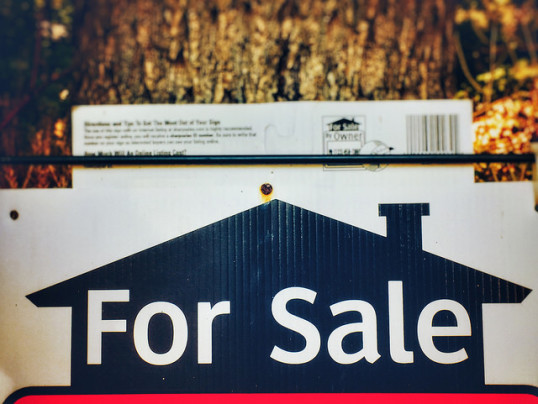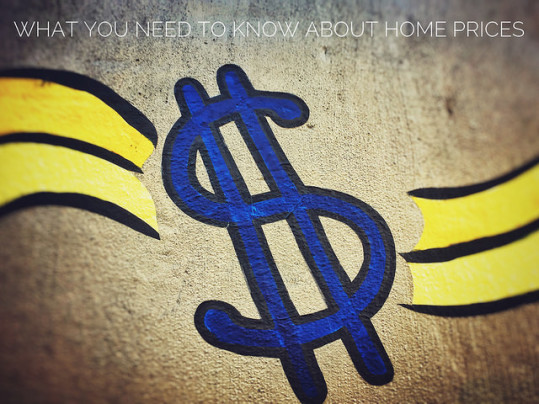While it’s true that – among demographic groups – there are more young people living in urban centers than any other age group, new research shows that 47 percent of millennial homeowners actually bought in the suburbs. The data, from the Zillow Group’s Consumer Housing Trends Report, shows that, despite conventional wisdom, there are many young Americans that are drawn to the suburbs because they can provide more space and a lower cost of living. But not only are there a larger than expected number of young Americans buying in the suburbs, there are a growing number of young Americans buying in general. “Millennials are shaping the market more than anyone realized,” Jeremy Wacksman, Zillow’s chief marketing officer, said. “In fact, half of all buyers are under 36 and half of sellers are under 41.” The long rumored return of first-time home buyers appears to have officially started and that’s good news for the housing market. But this time around things are a bit different. For example, today’s first-time buyer isn’t shopping for the typical “starter” home. The research shows that – perhaps because they’ve waited longer to buy their first home – younger Americans are buying homes that are nearly as large as the typical “move-up” home. More here.
Archive for November 2016
More Americans Feel It’s A Good Time To Buy
Despite feeling more pessimistic overall, a recent survey of Americans found that an increasing number said now was a good time to buy a house. Fannie Mae’s Home Purchase Sentiment Index – which tracks consumer attitudes toward buying and selling a home, mortgage rates, wages, home prices, and more – saw a 2 percent increase in the number of respondents who said it was a good time to buy and a 4 percent bump in participants who said it was time to sell. Despite the improvement, the overall index fell for the third straight month. Doug Duncan, Fannie Mae’s senior vice president and chief economist, says uncertainty is taking its toll. “The HPSI fell in October for the third straight month from its record high in July, reaching the lowest level since March. Recent erosion in sentiment likely reflects, in part, enhanced uncertainty facing consumers today,” Duncan said. “Since July, more consumers, on net, have steadily expected mortgage rates to rise and home price appreciation to moderate. Furthermore, consumers’ perception of their income over the past year deteriorated sharply in October to the worst showing since early 2013, weighing on the index. However, this component of the HPSI is volatile from month to month, and the firming trend in wage gains from the October jobs report, if sustained, may foreshadow an improving view in the near future.” More here.
Who Buys Vacation Homes And Where They Buy
Everyone, at one time or another, has dreamed of buying a vacation home. Whether it was just a temporary fantasy brought on by a particularly perfect trip or it was something more real, it’s hard not to think about the joys of owning a place in your favorite town or getaway spot. But who’s actually buying vacation homes and where are the most popular locations to have a house? Well, the National Association of Realtors collects that info each year as part of their Investment and Vacation Home Buyers Survey. This year’s results show that, among vacation home buyers, the South is the most popular area to buy. In fact, a full 47 percent of vacation homes bought last year were purchased in the South. The West came in second with 25 percent. Also, beach houses outpace all others, with sales more than doubling the number of homes purchased in the mountains, at a lake, or in the country. And who’s most likely to buy a vacation home? Not surprisingly, Lawrence Yun, NAR’s chief economist, says older buyers. “Baby boomers at or near retirement continue to propel the demand for second homes, although headwinds softened the overall volume of vacation sales last year,” Yun said. In 2015, the median household income of a vacation home buyer was $103,700 and the property they purchased was a median distance of 200 miles away from their primary home. More here.
What You Need To Know About Home Prices
Whether you’re looking to buy a home or you’re ready to sell one, home prices are likely a topic of great interest to you. For this reason, a couple of new reports deserve a closer look. First, ATTOM Data Solutions just released their U.S. Home Sales Report for the third quarter. Among the results, the data shows that the median home price has now surpassed its pre-recession peak and is at an all-time high. In fact, the median price in the third quarter hit $230,000 – which is 1 percent higher than its previous peak of $227,000 in 2005. But though that sounds like bad news for buyers, there may be more to the story. That’s because another recent report shows that – though home prices continue to rise – so does the number of price reductions. That means, more sellers are adjusting their price after originally listing their house. Whether that’s because they just priced it too high to begin with or are in markets where prices may have peaked is debatable. However, 70 of the largest 100 metropolitan areas saw an increase in price reductions. Of course, home price trends can vary from one location to the next. For example, ATTOM’s chief economist, Darren Blomquist, points out that, while prices have hit new peaks in some markets, there are also still markets where there are a high number of distressed properties and opportunities for buyers looking for a bargain. More here.
Mortgage Rate Bump Leads To Slower Demand
According to the Mortgage Bankers Association’s Weekly Applications Survey, average mortgage rates increased last week from the week before. The increase brought rates to their highest level since June and caused a slight dip in overall demand for mortgage loans. Refinance activity – which is generally more sensitive to rate fluctuations – fell 2 percent, while demand for loans to buy homes was down less than 1 percent from the week before. Michael Fratantoni, MBA’s chief economist, told CNBC there are several factors that point to more rate increases in the near future. “Globally, rates have begun to creep upwards as investors anticipate less aggressive monetary policies from central banks, and U.S. rates are being pushed upwards in response,” Fratantoni said. “Additionally, new data show continued positive signals regarding the job market and rising inflation, indicating the Fed is likely to hike in December and will continue increasing rates next year.” But, though rate increases are expected in the coming months, they are also expected to be gradual – likely keeping rates low by historical standards, at least in the near term. The MBA’s weekly survey has been conducted since 1990 and covers 75 percent of all retail residential mortgage applications. More here.
Comparing Home Prices To The Stock Market
Because they are the two markets Americans are most likely to invest in, the stock market and housing market are often compared. Analysts and economists will break down the numbers in an effort to decipher which is the better long-term bet for your bottom line. Most recently, David M. Blitzer, managing director and chairman of the index committee at S&P Dow Jones Indices, took a look at the past several years and compared home price increases and the stock market rebound. “Since the last recession ended in June 2009, the stock market as measured by the S&P 500 rose 136 percent to the end of August while home prices are up 23 percent,” Blitzer said. “However, home prices did not reach bottom until February 2012, almost three years later. Using the 2012 date as the starting point, home prices are up 38 percent compared to 59 percent for stocks.” But, though stock market gains have outpaced price appreciation, real estate has an edge when comparing total value. In fact, Blitzer notes that Americans’ homes are valued at around $22.3 trillion, while the value of stocks and mutual funds is $21.2 trillion. More here.
Home Buyers Stay Active Into Fall
Conventional wisdom has it that after the spring and summer sales season, the real estate market cools off. Home sellers wait until next year and buyers are too busy with the school year, holidays, and winter weather to bother shopping for a home. There is an argument to be made, however, that fall is a great time to shop for a home and, according to new numbers from the National Association of Realtors, many Americans agree. In fact, the NAR’s Pending Home Sales Index – which measures the number of contracts to buy homes signed during the month – was up 1.5 percent in September and is now 2.4 percent higher than last year. Lawrence Yun, NAR’s chief economist, says demand was strong, particularly in the West and South. “Buyer demand is holding up impressively well this fall with Realtors reporting much stronger foot traffic compared to a year ago,” Yun said. “Although depressed inventory levels are keeping home prices elevated in most of the country, steady job gains and growing evidence that wages are finally starting to tick up are encouraging more households to consider buying a home.” The Pending Home Sales Index is considered a good indicator of future home sales because it measures contracts to buy, rather than closings. More here.







